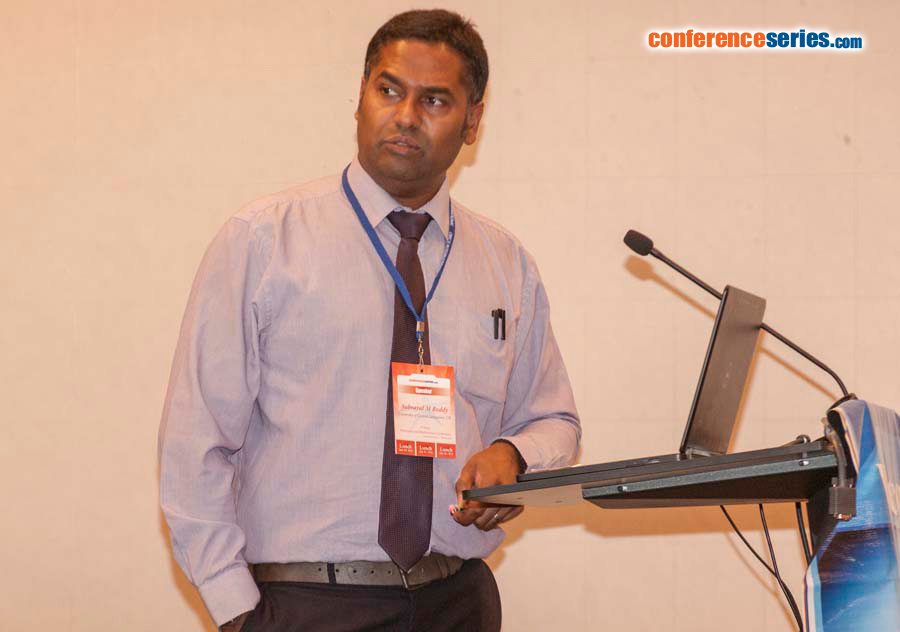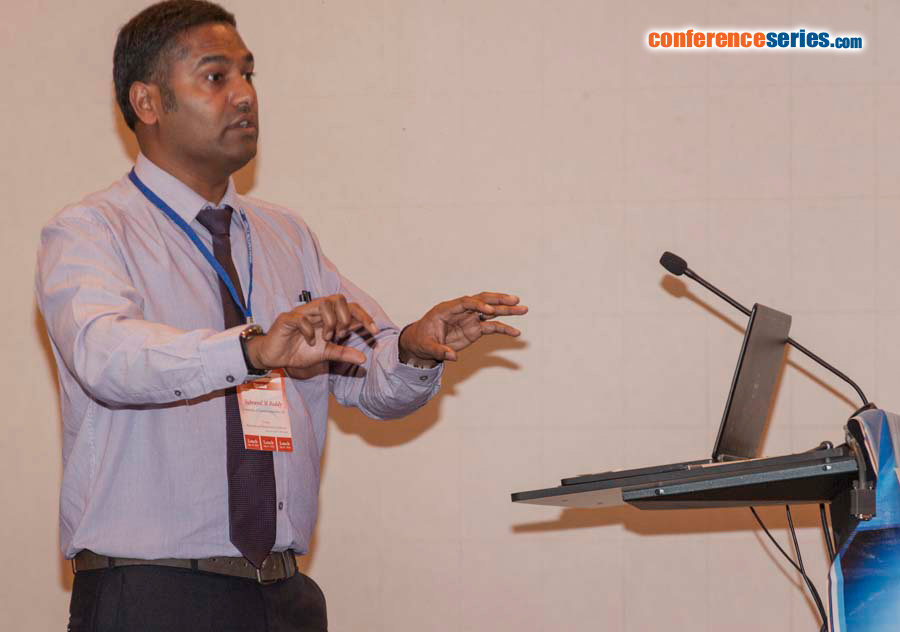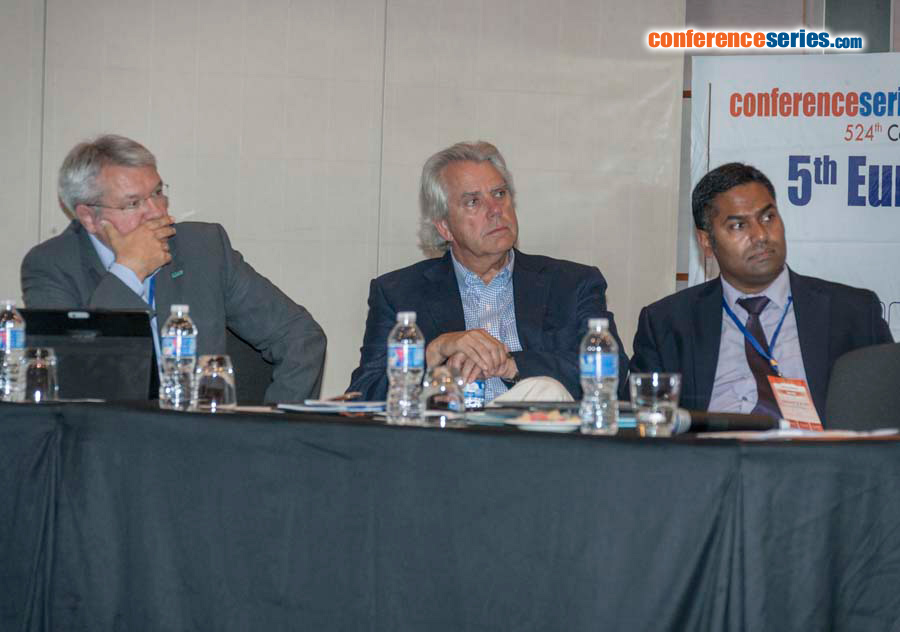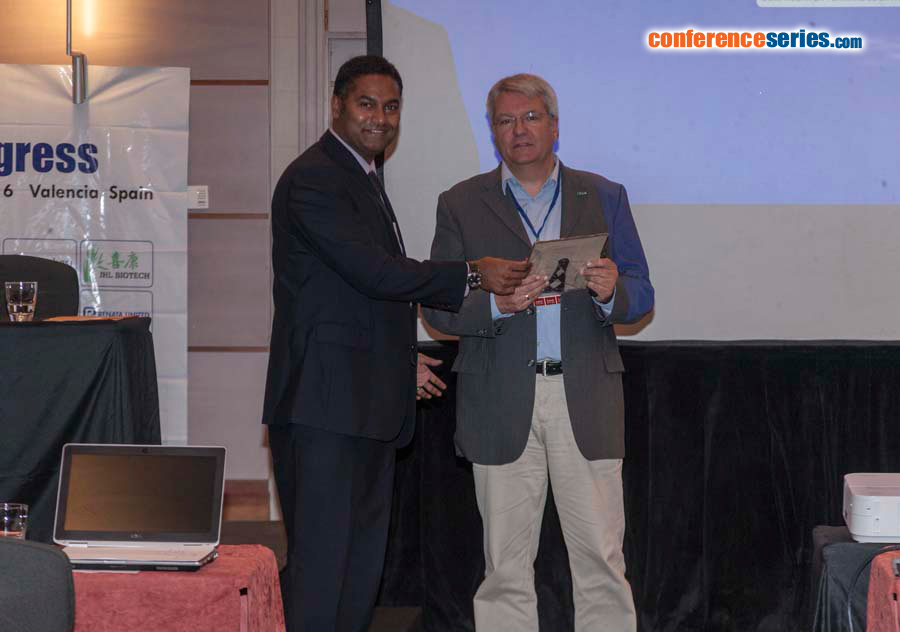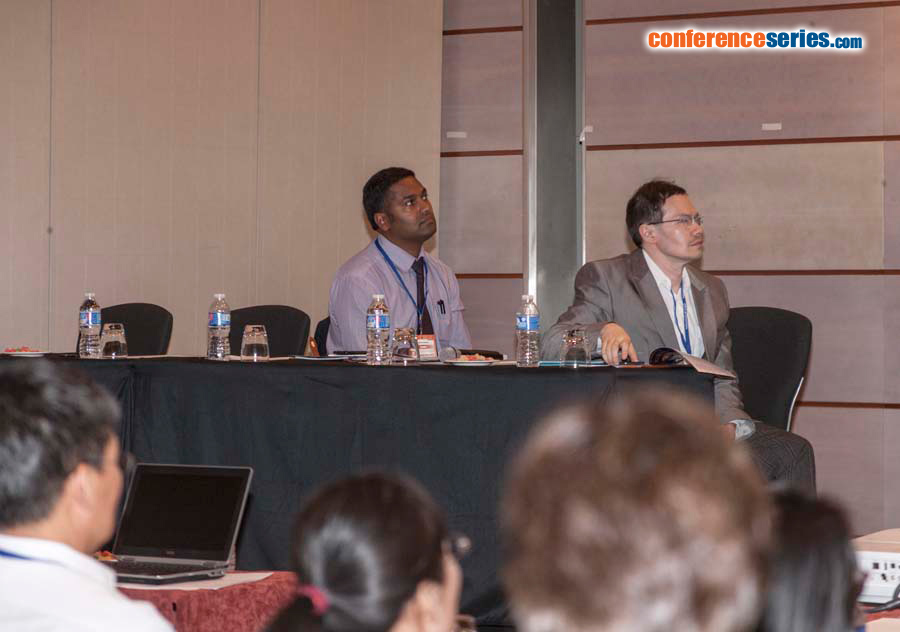
Subrayal M Reddy
University of Central Lancashire, UK
Title: Smart materials:Advances in protein-based molecularly imprinted polymer biosensing
Biography
Biography: Subrayal M Reddy
Abstract
Hydrogel-based molecularly imprinted polymers (HydroMIPs) were prepared for several proteins using a family of acrylamide-based monomers. We report HydroMIP binding affinities, in terms of equilibrium dissociation constants (Kd) within the micro-molar range (25±4 µM, 44±3 µM and 17±2 µM for haemoglobin, myoglobin and catalase respectively within a polyacrylamide-based MIP). We have used atomic force spectroscopy to characterize molecular interactions in the MIP cavities using protein-modified AFM tips. Our force data suggest that we have produced selective cavities for the template protein in the MIPs and we have been able to quantify the extent of non-specific protein binding on, for example, a NIP control surface. For the first time, we have also coded the MIPs with a covalently-bound redox tag in order to elicit a direct electrochemical signal in the event of selective protein binding. GC and SPE probes were used for signal transducers and imprinting determination. Co(II)-complex-based MIPs exhibited 92±1% specific binding with protein binding capacities of 5.7±0.45 mg BSA/g polymer and imprinting factors (IF) of 14.8±1.9 (MIP/ non-imprinted (NIP) control). The selectivity of our Co(II)-coded BSA MIPs were also tested using bovine haemoglobin (BHb), lysozyme (Lyz), and trypsin (Tryp). In summary, MIP technologies could provide an inexpensive, fast, and efficient diagnostic biosensor platform highly sensitive, in-situ analysis of biologicals for both environmental and biomedical applications. The author acknowledges UKIERI (IND/CONT/R/12-13/779), the British Council and DST (India) and NERC and RSC_ACTF (NE/J01/7671) for funding this project.


